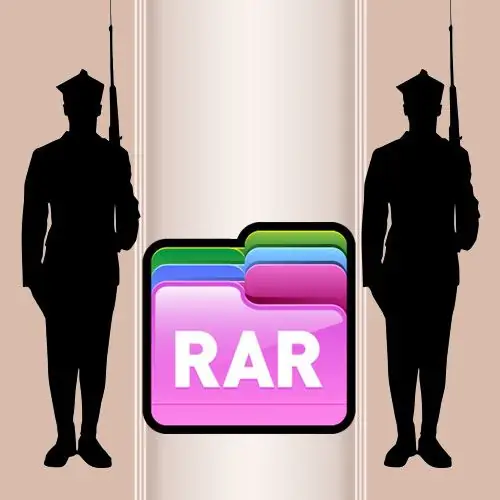- Author Lauren Nevill [email protected].
- Public 2023-12-16 18:48.
- Last modified 2025-01-23 15:15.
Almost all programs used to create file archives have options for protecting access to content using passwords. Some of these "modal" file storages they create allow you to see what exactly is inside (file names), but to extract it from the archives, you will need to enter the password set by the creator.

Instructions
Step 1
Start your operating system's standard file manager. In Windows, this is Explorer and it opens either by double-clicking on the "My Computer" icon on the desktop, or by pressing the WIN + E hotkey combination. Using Explorer, find the archive you want to unpack.
Step 2
Right-click the found file and select one of the unpacking options in the drop-down context menu. Depending on which archiver is installed on your system, these items may differ, but each of these programs must require you to enter a password before starting the file extraction process, regardless of the option you choose in the menu.
Step 3
Enter the password for the protected archive in the corresponding field of the dialog box shown to you by the archiver. Since you will not see the text you are typing, since the characters for conspiracy will be replaced by unreadable characters, the probability of making a mistake when entering text is higher than usual. It is much safer to copy the password (CTRL + C) and paste it into the required field of this dialog box (CTRL + V).
Step 4
Click the "OK" button in the dialog box. After that, the program will check the text you entered with the sample stored in the service part of the archive file. It should be noted that even after examining the disassembled ("disassembled") file code, it will not be possible to find out the password stored there, since the "one-way" encryption algorithm is used when writing it. This means that it is impossible to decrypt the password, but you can only encrypt the value you entered in the same way and check whether these two encrypted passwords match. If the check is successful, the program will extract the files from the archive to the location of your choice. Otherwise, the archiver will show a corresponding error message and you will need to do the whole operation again with the specified password.






